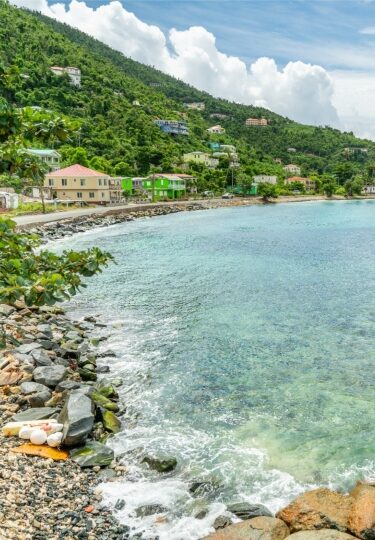An emerald speck in a peacock-blue sea, Tortola, British Virgin Islands is the commercial hub of the archipelago, which lies adjacent to the U.S. Virgin Islands. Pristine bays and sandy beaches encircle the island, its hilly center cloaked in forest and fragrant scrub.
Tortola’s laid-back capital, Road Town, is the seat of the BVI’s government and one of the most popular yachting bases in the region. Away from the bustle of Road Town’s downtown area, the island is as slow-paced as the Caribbean gets.
Tortola is an outdoor playground for snorkeling, wreck diving, hiking, and simply unwinding on beautiful beaches. Even a short visit to this enchantingly beautiful place will leave you feeling revived and relaxed.
Why Visit Tortola
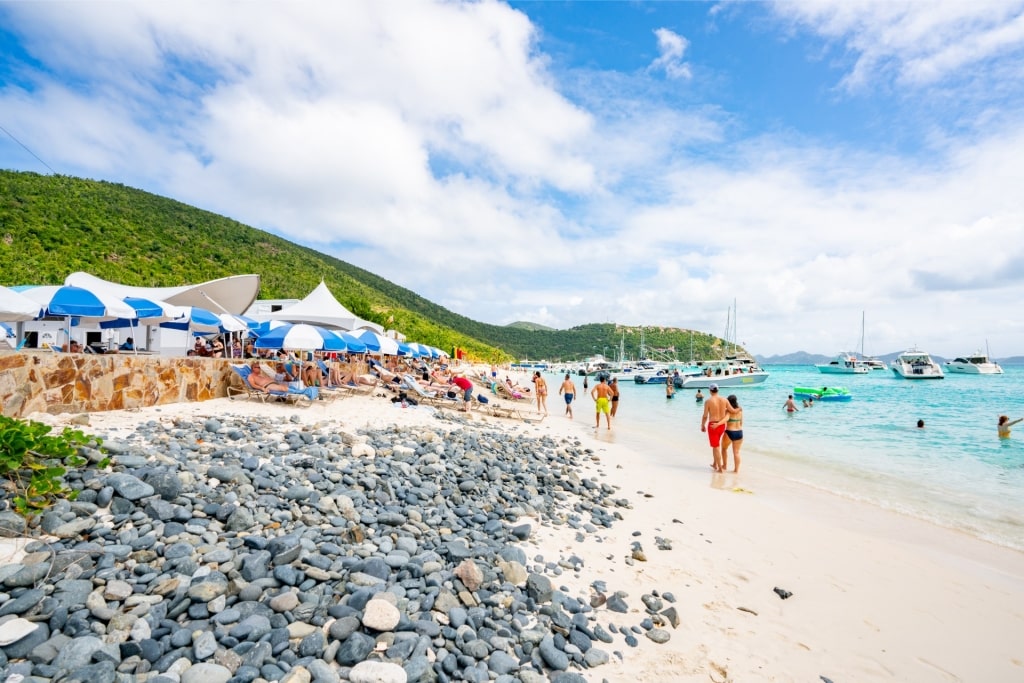
Beach in Tortola
Geographically, the British Virgin Islands are similar to their U.S. cousins, a stone’s throw across the water, with forested peaks, world-class diving, and spectacular white sand beaches. The BVI, although technically a British Overseas Territory, even has the U.S. dollar as its currency.
Beyond this, the islands are different, which makes a visit here a chance to see a different face of the Caribbean. Tortola is much quieter than bustling St. Thomas. This beautiful Caribbean island has more of a laid-back, barefoot luxury vibe with a distinct British influence.
Tortola is compact—just 21.5 square miles—so it’s easy to explore, although you do have to take into account the mountainous center. But there’s plenty to do here, from trips to the luscious Cane Garden Bay Beach to hiking in Sage Mountain National Park. Other islands in the group, including Virgin Gorda and Jost van Dyke, are easily accessible as day trips by boat, too.
History & Culture
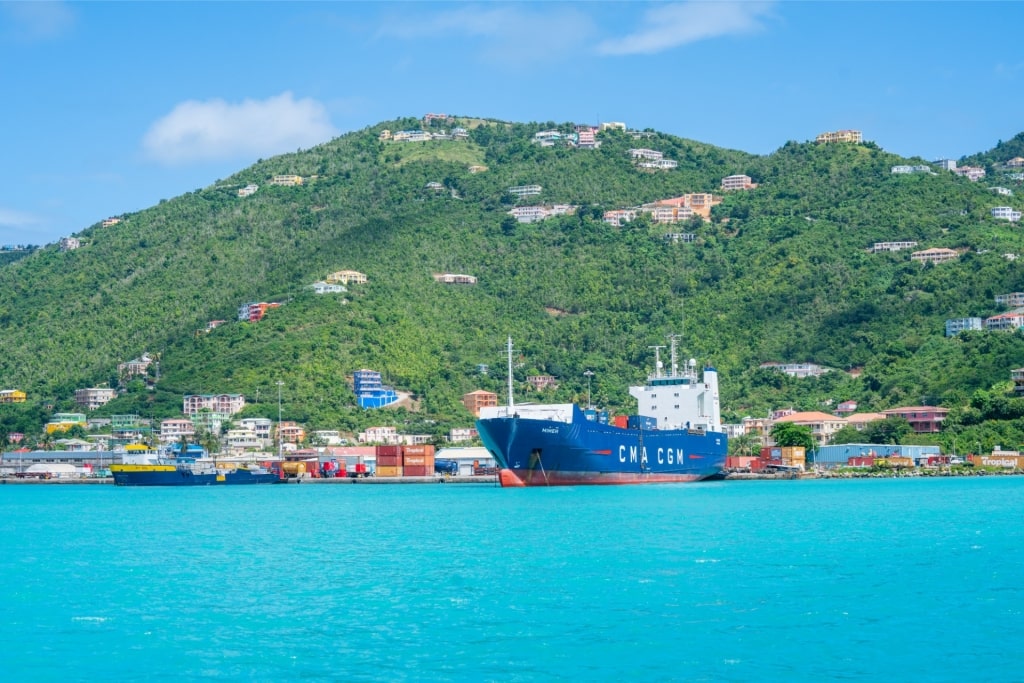
Tortola
The original settlers of the BVI are believed to have been Arawak from South America, who lived here more than 2,000 years ago and stayed until the 15th century. Archaeological sites of Arawak settlements have been found all over Tortola. The Arawak may have been displaced by the Carib people, but there is no clear evidence of this.
Christopher Columbus sighted the islands in 1493 and named them Las Virgines. The Spanish, though, never settled the territory. The Dutch privateer Joost van Dyk, after whom one of the islands is named, established a settlement in Soper’s Hole on Tortola and farmed tobacco and cotton. The Dutch considered the islands an important staging post between their territories in North and South America. But the Dutch West India Company failed to thrive and England took control of what’s now the BVI in 1672.
Tortola and Virgin Gorda were taken over by plantation owners exploiting slave labor. Slavery was eventually abolished on August 1, 1834, an occasion that is still marked by three national holidays and two weeks of celebration in August.
Today, tourism and offshore finance are the mainstays of the economy. The culture of the islands takes influences from Africa, Europe, the wider Caribbean, and the U.S., with a lively calendar of music and festivals. English is the official language, but you’ll also hear Creole spoken, with a patois unique to the BVI.
Wildlife & Nature
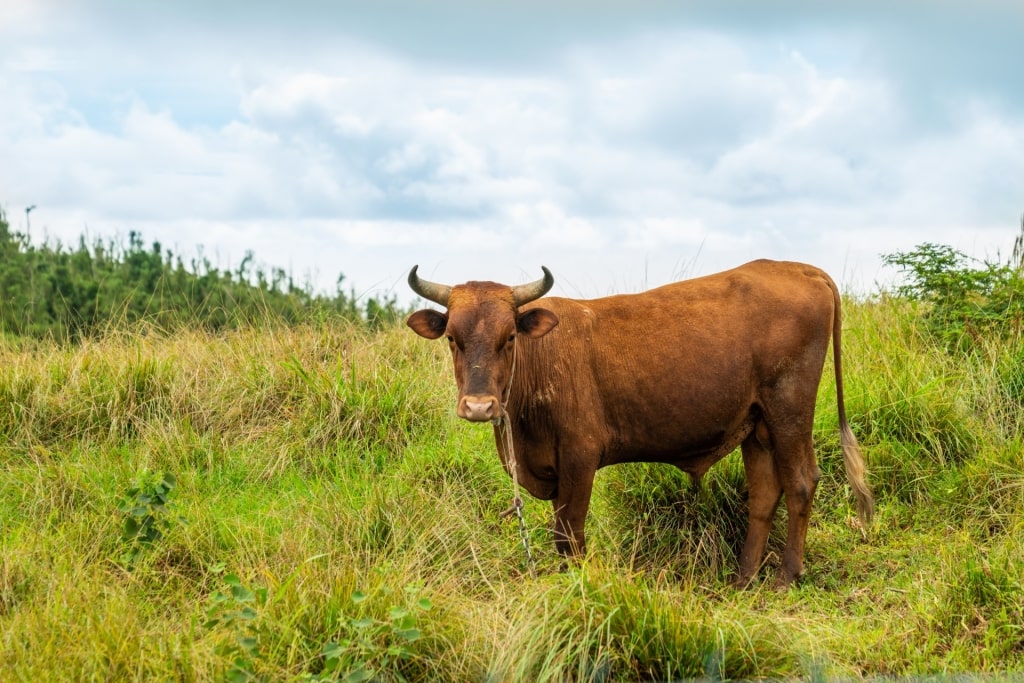
Cow in Tortola
Tortola is blessed with abundant wildlife, both on land and under the water. When you’re hiking amid the fragrant scrub and forest of Sage Mountain National Park, look out for iguanas, tortoises, tree frogs, bats, and geckos. Native birds to the island include the tiny, yellow-breasted bananaquit, the BVI’s national bird, as well as frigatebirds, pelicans, and jewel-like hummingbirds.
Under the water, you’ll find a kaleidoscope of color as tropical fish flit around the coral. You could see elegant angelfish, trumpetfish, lobster, crabs, octopus, and parrotfish in hues of shimmering pink and turquoise, munching on the coral. Sea turtles and sometimes reef sharks can also be spotted.
Tips for Visiting Tortola
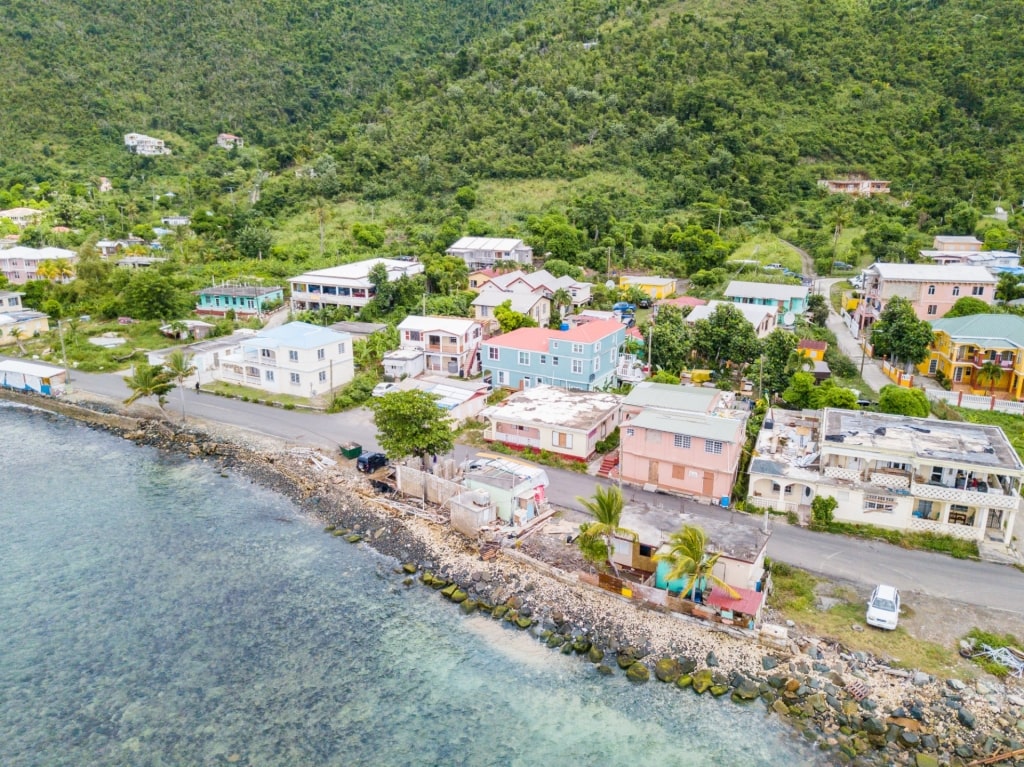
Tortola
While Tortola is compact, it’s hilly, so don’t underestimate how you will get around, especially in the tropical heat. If you rent a car, remember that driving is on the left and the roads are often pot-holed. You will need to give way to pedestrians, cows, iguanas, and other Caribbean wildlife. An easier way to explore is by taxi, for which the rates are fixed, or on an organized tour. Many taxi drivers double up as tour guides, for which there may be an extra fee.
There are no beaches in Road Town itself, so if this is your starting point, you will need to take a taxi or a tour to one of the nearby beaches. Cane Garden Bay is one of the most scenic, and the most popular. There are plenty of taxis waiting for business outside Tortola Pier Park on the waterfront.
If you’re in the market for souvenirs, local art, island spices, and bottles of rum, there are plenty of shops in Road Town. The Tortola Pier Park is one option. The Crafts Alive Village, with each stall housed in a jauntily painted West Indian-style cottage, is great for clothing, watercolors, locally made jewelry, and fresh juices.
Things to Do & Attractions in Tortola
Explore Road Town
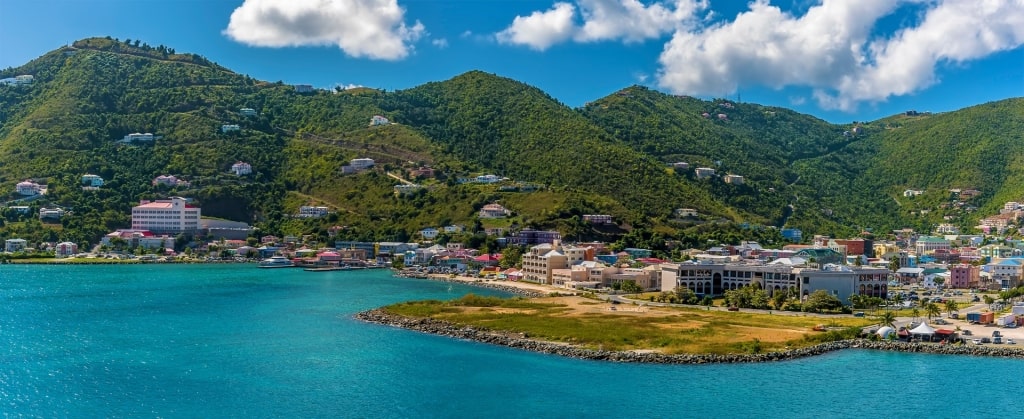
Road Town
Road Town has plenty to see and some intriguing historical buildings. The town lies at the end of a natural harbor, sloping up steeply into green hills, the landscape brilliant with mauve bougainvillea and other tropical flowers.
Many of the best things to do in Tortola are on Main Street, which runs parallel to Waterfront Drive and loosely follows the curve of the bay. Check out the sinister Prison Museum, which was built in 1774 and was still functioning as a jail in the 1990s, the prisoners housed in tiny, humid cells. Capital punishment existed in the islands until the 1970s, and prisoners were executed at this site.
You can admire typical British colonial architecture at the Old Government House, the former home of the English governor of the islands. Witness the clear Caribbean influence at the red-and-white St. George’s Episcopal Anglican Church, which dates to the 19th century.
The Sunny Caribbee Spice Shop & Art Gallery on Waterfront Drive is a great place to pick up traditional spice mixes to take home, as well as jams, coffee, hot sauces, and even Christmas tree decorations.
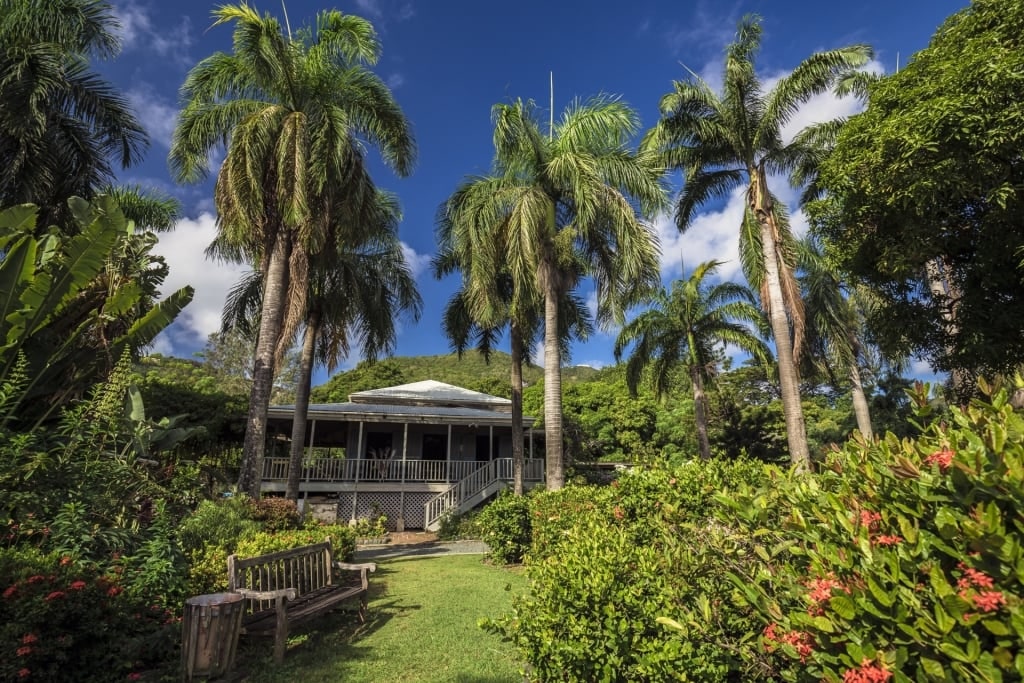
J. R. O’Neal Botanic Gardens
Finally, take a stroll in the J. R. O’Neal Botanic Gardens, a tropical oasis named after Joseph Reynold O’Neal, an early conservationist in the British Virgin Islands. Orchids, tropical birds, and a lily pond all contribute to this soothing setting.
Head to Cane Garden Bay Beach
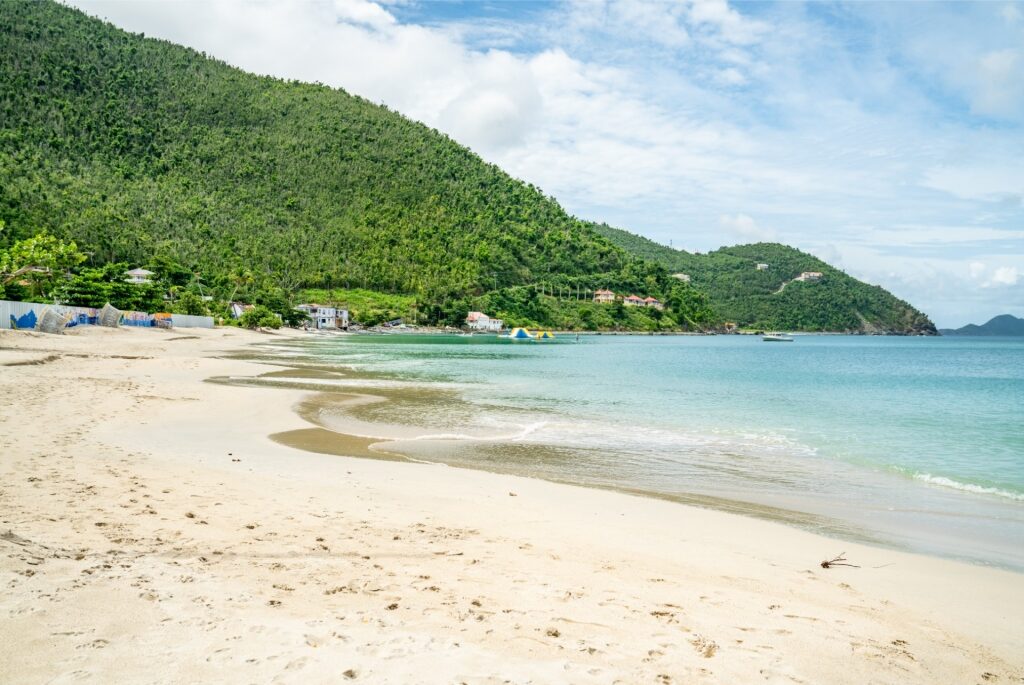
Cane Garden Bay Beach
Cane Garden Bay, a wide sweep of white sand backed by coconut palms and sugar cane plantations, is one of the most popular beaches on Tortola. Luckily, there’s plenty of space for everybody.
The sheltered position of the bay means this is the ideal spot for novice kayakers and paddleboarders, and you’ll find watersports equipment available to rent here. Reefs at either side are teeming with marine life.
There are plenty of beach bars for when you get thirsty, as well as a supermarket where you can stock up on provisions for a picnic lunch.
Hike Sage Mountain National Park
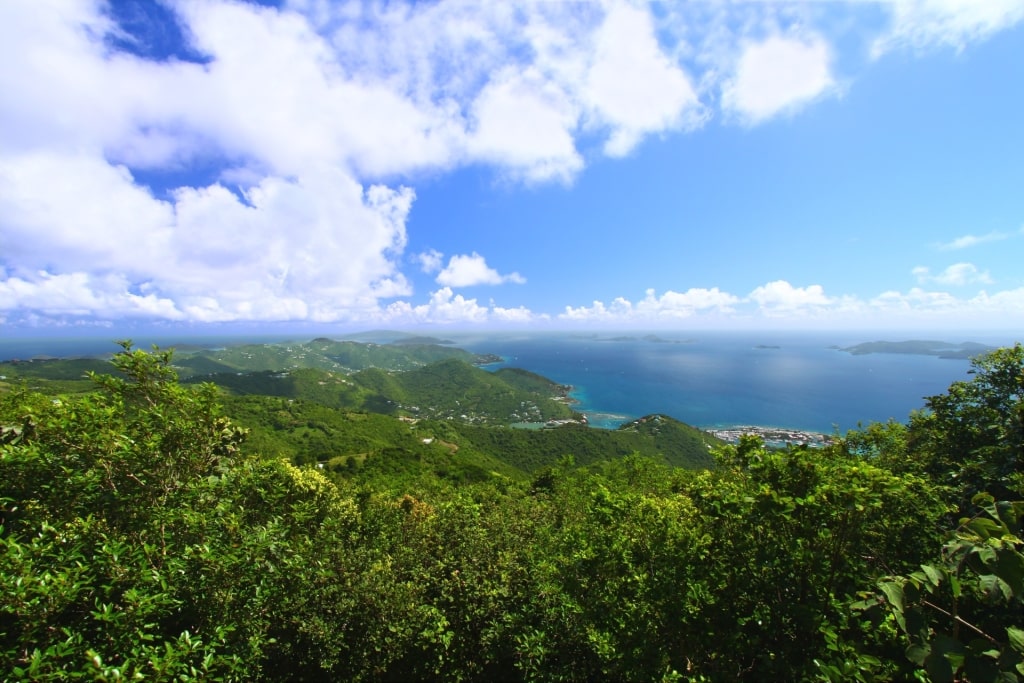
Sage Mountain National Park
One of the best hikes in the Caribbean is Sage Mountain, which lies at the center of Tortola. Its peak, at 1,710 feet, is the highest point in the Virgin Islands. Unsurprisingly, the views from up here of the surrounding islands are stupendous.
The national park is criss-crossed with hiking trails where you can see endemic trees, from mahogany to white cedar, as well as old-growth rainforest. Look out for birds, bats, and reptiles as you hike.
The trail to the summit is two-and-a-half miles, so take plenty of water and wear suitable hiking shoes.
Sample Local Rum

Callwood Rum Distillery
The Callwood Rum Distillery, one of the oldest rum producers in the Caribbean, is at Cane Garden Bay and can be combined with a visit to the beach. Arundel Rum has been produced here for 200 years, using recipes that have been handed down through the generations. All the sugar cane used to make the rum is grown right here, behind Cane Garden Bay, making the distillery a shining example of sustainability.
During a visit, you can admire the old buildings and the blackened still, see the sugar plantation, and visit a small museum, as well as taste and buy Caribbean rum to take home.
Clamber Through the Baths at Virgin Gorda
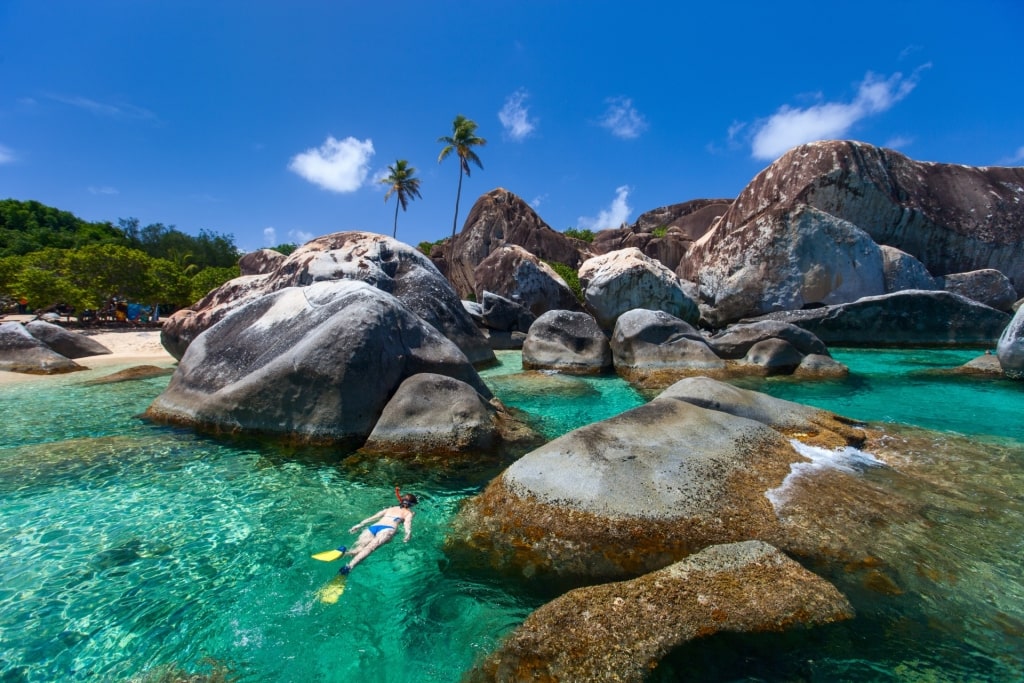
Baths at Virgin Gorda
One of the best things to do in the British Virgin Islands is to take a boat excursion from Tortola to The Baths on the shore of Virgin Gorda.
Here, giant, tumbled granite boulders line the beach, concealing shaded caves and tranquil lagoons. The idea is that you make your way along through the rocks via a series of ladders, rope handholds, and shallow wading pools.
It’s a tremendous adventure. You will get wet, so swimwear, a mask and snorkel, and a waterproof camera are all you’ll need.
See the Island on a Jeep Safari
Explore Tortola in a convoy of jeeps on a thrilling guided safari. This is a great chance to drive the steep Ridge Road that winds across the island’s forested mountains, as well as quieter roads and dirt trails.
You will be led by a guide and there will be plenty of stops for photos, taking in the views, and later, swimming to cool down and wash off the trail dust.
Food & Drink
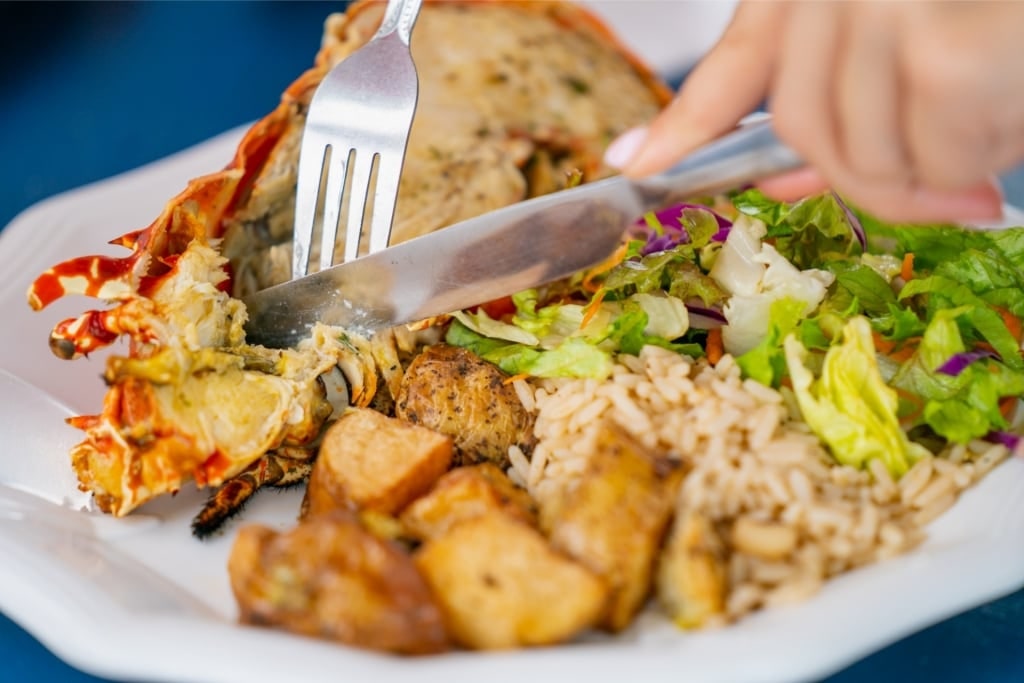
Lobster
The cuisine of Tortola and the rest of the British Virgin Islands is typical of the region, with influences from Africa and Europe as well as the traditional dishes of the Caribbean.
Caribbean seafood dominates many menus, particularly conch and lobster in season, which is from July to October. Mahi Mahi, tuna, wahoo, snapper, and grouper are all great local catches to try at other times. Fish is often paired with fungi, which is not a mushroom dish but a rich carbohydrate of creamy cornmeal prepared with okra, onions, and tomatoes, dating back to the times of slavery.
You’ll find roti in most establishments, with curried meat and vegetables wrapped in a flatbread, as well as chicken and other meats spiced with jerk seasoning. Rice ‘n’ peas, the Caribbean staple of rice cooked in coconut milk with black beans, is everywhere, as are sides such as sweet potatoes and fried plantains.
A great street food snack to fuel up on is pate, a half moon of fried pastry stuffed with meat, vegetables, or salt fish. Or if you’re craving a fix of artisan coffee and decadent local baked goods like banana bread or pineapple coconut muffins, head to Island Roots on Main Street in Road Town, one of the best cafés on the island.
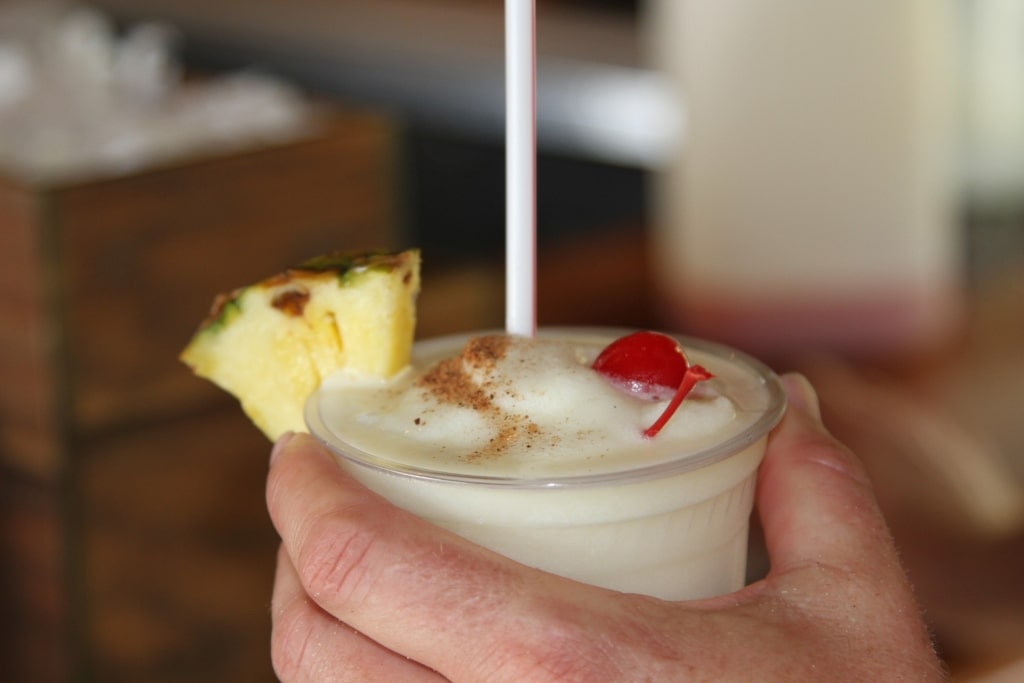
Painkiller
Lovers of rum should not miss the chance to try a Painkiller, the BVI’s signature drink. It uses Pusser’s Rum, which is bottled here. Pineapple juice, coconut cream, orange juice, and grated nutmeg blended with the rum create a deceptively innocuous but powerful Caribbean cocktail. Try it at Pusser’s Road Town Pub, a local watering hole decked out in nautical memorabilia.
If you’re traveling around the island, stop at Soper’s Hole Wharf and Marina for an al-fresco lunch at Pusser’s Landing, a popular yachtie gathering place serving coconut-crusted chicken, rotis, and wraps to accompany your Painkiller.
Best Time to Visit Tortola
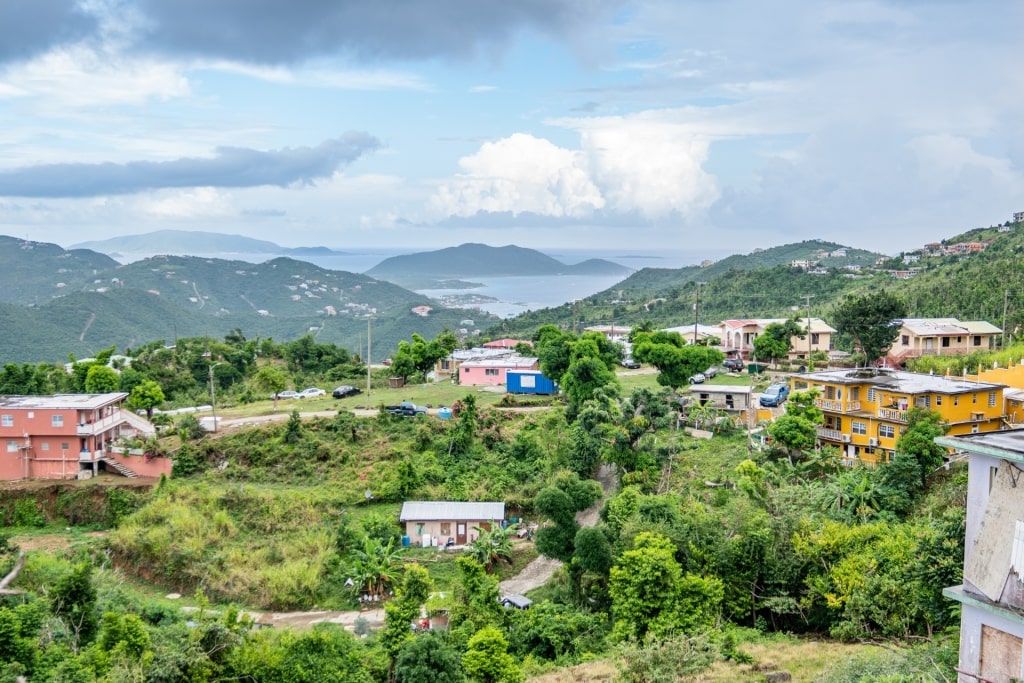
Viewpoint in Tortola
The best time to visit Tortola, British Virgin Islands is between December and April, when the weather is warm and sunny and the humidity less intense. Arrive in late March or early April and you could catch the BVI Spring Regatta, a glamorous festival of yacht racing.
The shoulder season months of May, June, October, and November are also a great time to visit, with pleasant weather but higher humidity than in the winter months.
While July and August are not the best time for beach life or diving, the first two weeks of August are a great time to be on Tortola for the joyful Emancipation Festival.
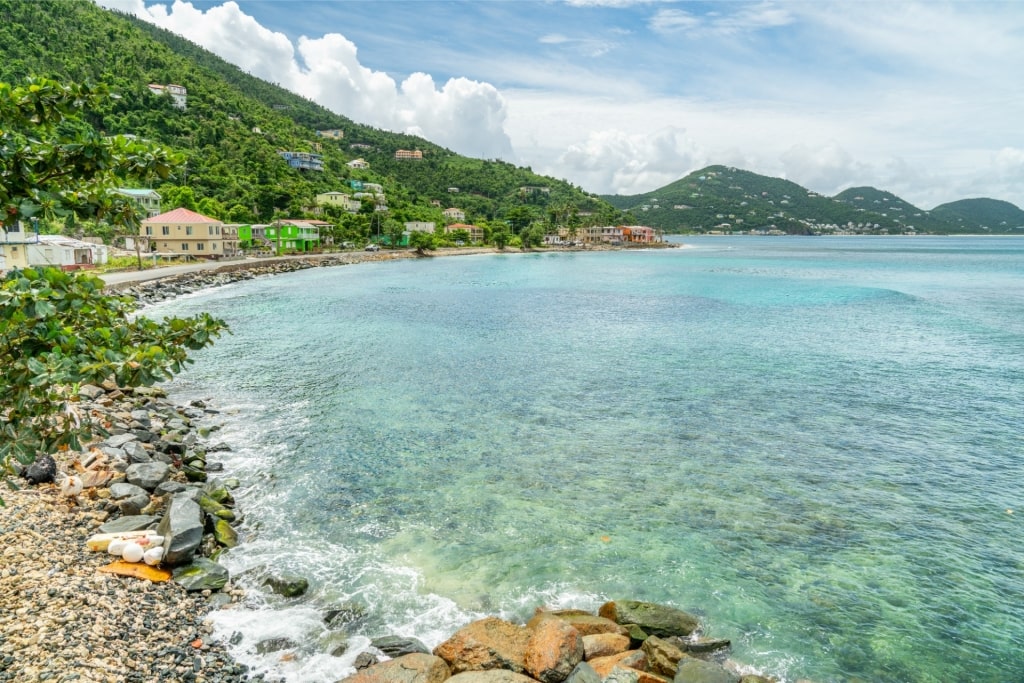
Tortola
Ready to discover the beautiful British Virgin Islands? Browse Celebrity’s cruises to Tortola and book your getaway today.
